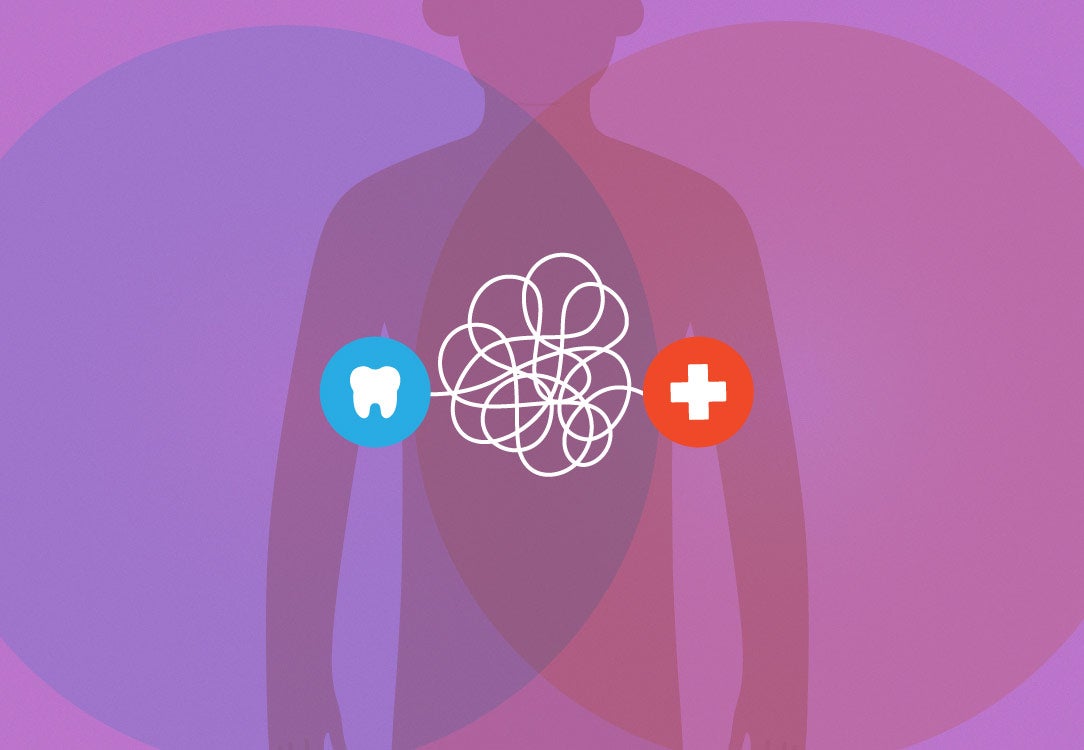Blog Summary If you’ve recently had a tooth pulled and are feeling severe pain, bad breath, or notice an empty-looking spot where the tooth was, you might have dry socket. This article explains what it is, the dry socket symptoms to watch for, and how your dentist can help you heal and feel better fast.
What Is a Dry Socket?
Dry socket is the most common complication after tooth extractions. It occurs when the blood clot that normally forms in the hole left behind by a removed tooth becomes loose, comes out, or doesn’t form at all. Without this protective clot, the bone and nerve endings in the socket are exposed, which can be painful—especially if food particles or debris get into the open wound. Although it is the most common complication, dry socket only develops in about 2% to 5% of extractions and is more likely after a molar or wisdom tooth is pulled.

What Does Dry Socket Look Like?
How Long Does Dry Socket Last?
If you develop dry socket after a tooth extraction, you may wonder how long it generally lasts. With prompt treatment from a dentist, dry socket may resolve quickly. You may feel significant pain relief within just a few minutes of starting treatment. The pain may continue to get better over the next few days.

Who Is Likely to Get Dry Socket?
- People that smoke tobacco products. You smoke cigarettes or use other tobacco products. How does smoking cause dry socket? It can decrease your body’s ability to heal wounds. That’s because the nicotine in tobacco restricts your blood vessels. After a tooth extraction, this reduced blood flow to your gum tissue could prevent or slow the healing process.
- You had a wisdom tooth removed. While dry socket could develop after any tooth extraction, this complication is much more common in wisdom teeth. Dry socket may occur after as many as 30% of wisdom tooth extractions.
- You don’t practice good oral hygiene. Bacterial contamination may play a role in developing dry socket, so it’s important to keep the wound clean as it heals. Follow your dentist’s instructions on cleaning your mouth and brushing your teeth after the extraction.
- You take oral contraceptives. The high levels of the hormone estrogen in these medications may interfere with the normal healing process after a tooth extraction. In fact, women who take oral contraceptives may get dry socket about twice as often as those who don’t.
If you’re concerned that you’re more likely to get dry socket, talk to your dentist.
Feeling Dental Pain? Book A Dental Appointment
What Causes Dry Socket?
What Are The Dry Socket Symptoms?
- Severe pain days after an extraction
- Bad breath or bad taste in your mouth
Socket looks empty
It’s normal to have some discomfort or pain after a tooth extraction. Your dentist may recommend managing this discomfort with over-the-counter pain medications. As the wound heals in the days after the extraction, the discomfort should get better.
Severe pain that starts within a few days of the extraction, or pain that gets worse over time rather than better, could be a sign of dry socket. In some cases, the pain may radiate from the extraction site to other parts of your head and neck. For example, you could feel pain in your ear or eye on the same side of your face as the tooth extraction.
Key Things to Know About Dry Sockets
Happens when the protective clot is lost after a tooth extraction.
Affects 2–5% of cases, but up to 30% of wisdom tooth removals.
Higher risk if you smoke, have poor oral hygiene, or take oral contraceptives.
Symptoms include severe pain, bad breath, and an empty-looking socket.
Quick dental treatment can ease pain fast.
Contact your dentist or oral surgeon right away if you notice any signs or symptoms of dry socket.

How Can I Prevent Dry Sockets?
- Sticking to soft foods. For the first few days after your tooth extraction, eat soft foods, such as applesauce, yogurt, and mashed potatoes. To avoid disturbing the clot, try to chew on the opposite side of your mouth from where the tooth was extracted.
- Steering clear of straws. Drinking through a straw may create suction, which could loosen or dislodge the clot in your tooth socket. For at least a week after having a tooth pulled, avoid drinking with straws.
- Avoiding tobacco products. Smoking after a tooth extraction is a risk factor for developing a dry socket. Your dentist may recommend avoiding tobacco for at least 48 hours after your extraction.
- Avoiding rigorous exercise. Working out is good for your health, but in the first few days after a tooth extraction, your dentist may recommend taking it easy. Rigorous exercise could dislodge the clot in your tooth socket, resulting in a dry socket.
- Rinsing your mouth. For the first few days after the extraction, your dentist may recommend gently rinsing your mouth with warm saltwater. To avoid disturbing the clot, try to avoid swishing vigorously or spitting.
- Brushing and flossing carefully. Regular brushing and flossing help keep your teeth healthy, but your routine may look a little bit different in the days after your extraction. Your dentist may recommend not cleaning the teeth next to the wound to avoid disturbing the clot.

How Can I Treat a Dry Socket?
Dentists and oral surgeons may offer many dry socket treatments to help relieve the painful symptoms of dry socket. These dry socket treatments may include:
- Cleaning the socket. Food particles or other debris may irritate the sensitive wound. Your dentist may flush out the socket to help reduce pain and encourage healing.
- Applying medicated dressings. To help your wound heal, your dentist may fill the socket with medicated paste or medicated gauze. Some dressings dissolve on their own, while others need to be removed by your dentist after two or three days.
- Recommending pain medication. Your dentist may recommend taking over-the-counter pain medication. If necessary, they may prescribe stronger pain medication.
Your dentist may recommend a dry socket treatment at home. This could include flushing out your socket with saltwater to remove debris. If you need to flush the socket, your dentist may provide a special plastic syringe with a curved tip.
Will a Dry Socket Heal on Its Own?
When Can I Stop Worrying About Dry Socket?
Dry socket occurs when the protective clot is dislodged before the wound heals, so it’s no longer a risk once the extraction site is healed. The healing time may vary depending on the tooth that was pulled. Typically, it takes about seven to 10 days for the extraction site to heal. If you had a wisdom tooth removed, it might take a bit longer: up to two weeks.
Key Things to Know About Dry Socket Treatment
Dentists may clean the socket to remove debris and reduce pain.
Medicated dressings can protect the wound and help healing.
Pain relief may include over-the-counter or prescription medication.
At-home care may involve gentle saltwater rinses with a special syringe.
Untreated dry socket can lead to infection, though it’s rare.
Find a Dentist Near You to Treat Dry Socket
Dry socket is a painful complication that may follow tooth extractions, but fortunately, it can be treated. If you’re experiencing dry socket symptoms and are asking where you can find a trusted dentist near me, you can use our Find a Dentist tool to search for Smile Generation-trusted dental offices in your area. You can browse staff bios and read reviews left by verified patients, and when you find the right dentist, you can request an appointment online.
Find your trusted, local dentist today!
Sources
1. DentistryIQ. (n.d.). Dodging the dreaded dry socket: Tips on preventing this painful possibility. Retrieved August 14, 2025, from https://www.dentistryiq.com/dentistry/oral-maxillofacial-and-surgery/article/16367785/dodging-the-dreaded-dry-socket-tips-on-preventing-this-painful-possibility
2. American Dental Association. (n.d.). Women’s hormones and dental health. Retrieved August 14, 2025, from https://www.mouthhealthy.org/all-topics-a-z/womens-hormones-and-dental-health
3. Boswell, C. (2018, October 16). Vaping slows wound healing. BU Today. Retrieved August 14, 2025, from https://www.bu.edu/articles/2018/vaping-slows-wound-healing/
4. Mayo Clinic. (n.d.). Dry socket: Symptoms and causes. Retrieved August 14, 2025, from https://www.mayoclinic.org/diseases-conditions/dry-socket/symptoms-causes/syc-20354376
5. American Dental Association. (n.d.). Extractions. Retrieved August 14, 2025, from https://www.mouthhealthy.org/all-topics-a-z/extractions/
6. Kaczor-Urbanowicz, K. E., & Kim, D. (2017). Wisdom tooth removal: Risks and recommendations. Journal of the Canadian Dental Association, 83(10), d54. Retrieved August 14, 2025, from https://jcda.ca/article/d54
7. National Health Service. (n.d.). Wisdom tooth removal. Retrieved August 14, 2025, from https://www.nhs.uk/tests-and-treatments/wisdom-tooth-removal/
Smile Generation blog articles are reviewed by a licensed dental professional before publishing. However, we present this information for educational purposes only with the intent to promote readers’ understanding of oral health and oral healthcare treatment options and technology. We do not intend for our blog content to substitute for professional dental care and clinical advice, diagnosis, or treatment planning provided by a licensed dental professional. Smile Generation always recommends seeking the advice of a dentist, physician, or other licensed healthcare professional for a dental or medical condition or treatment.
Dry Socket Causes and Treatment FAQs
Dry socket may not heal if the protective blood clot is lost too soon, the site becomes contaminated with bacteria, or risk factors like smoking or certain medications slow the healing process.
While the exact causes aren’t fully known, bacterial contamination and trauma to the extraction site are believed to play a role. It’s more common after difficult extractions, such as impacted wisdom teeth.
Warning signs include severe pain a few days after extraction, pain that worsens instead of improving, bad breath or a bad taste in the mouth, and an empty-looking socket where the tooth was removed.
Dentists can help by cleaning the socket, applying medicated dressings, and recommending pain relief. At-home care may include gentle saltwater rinses using a syringe provided by your dentist.
Dry socket is no longer a risk once the extraction site has healed, typically in 7–10 days for most teeth or up to two weeks for wisdom teeth.









